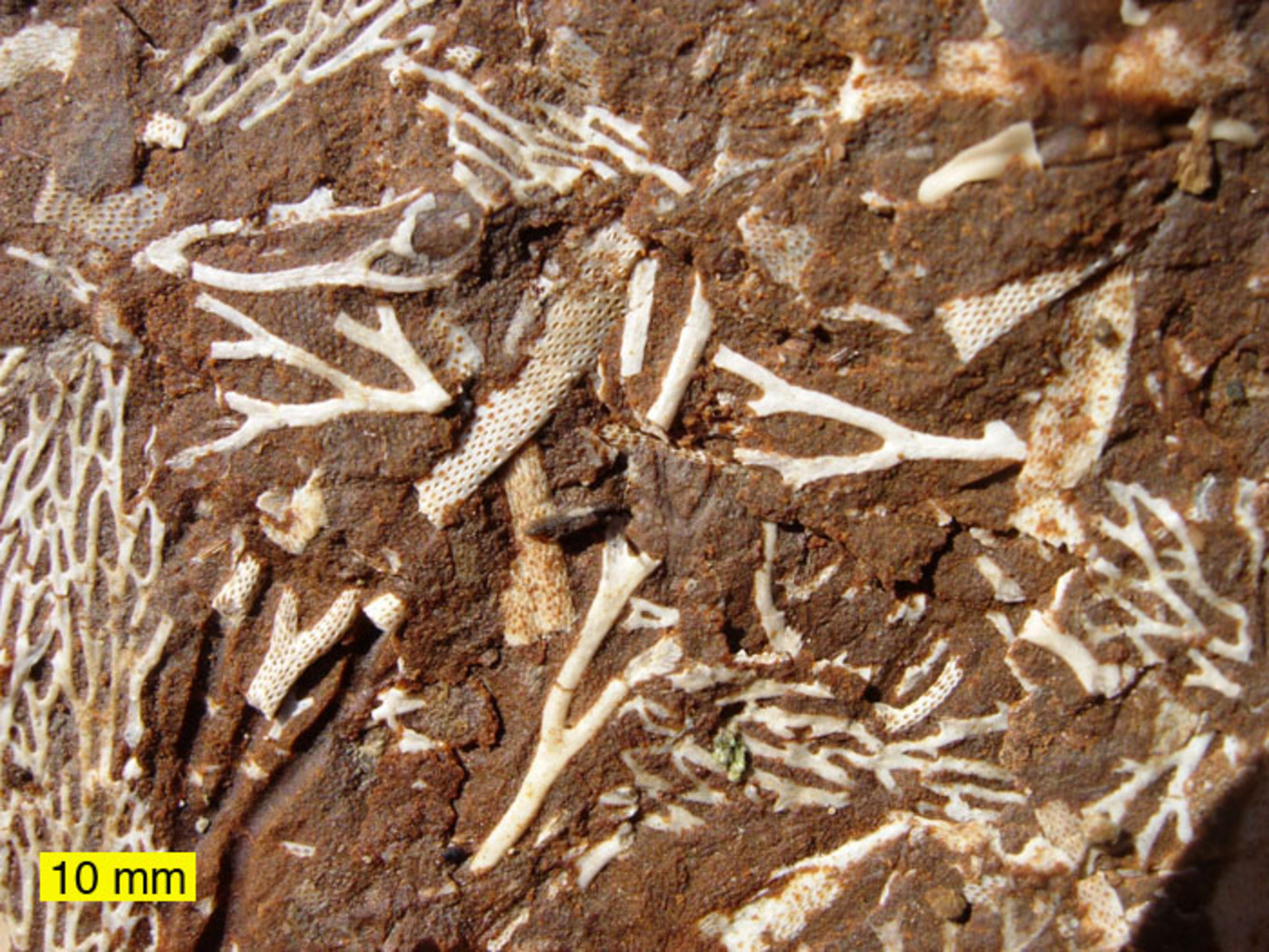Planet Earth Online - Bryozoans and Antarctic History
Interview with
Ben - Scientists are keeping a close eye on the West Antarctic ice sheet because if it's melts, we're in big trouble from the resulting rise in sea level. But how vulnerable is it? Dr. David Barnes from the British Antarctic Survey has been trying to find out by studying small marine creatures called bryozoans. Planet Earth podcast presenter, Richard Hollingham joined David to take a closer look at how life on a small rock can tell us about climate change.
David - What we're looking at is a small rock that's been collected from the continental shelf of the Weddell Sea and these small rocks are oases for life that encrusts other substrates, and it's covered by animals including bryozoans.
 Richard - Just first off, before we look down the microscope, it's really sort of a half fist-size, greyish rock with these white spiral patterns on it. These are the bryozoans...
Richard - Just first off, before we look down the microscope, it's really sort of a half fist-size, greyish rock with these white spiral patterns on it. These are the bryozoans...
David - They are. If we looked at them when they were alive, they would be brightly coloured. Lots of nice oranges, browns, greens, yellows... But when they dry out, they go white. And if you looked at them under the microscope as we're about to do, you can see that these are fighting each other. We're looking at an ancient battleground.
Richard - An ancient battleground. Okay, let's have a look through the microscope here... let's just adjust that... When they're on a rock, they look like someone's drawn spirals, but when you look under the microscope, they're very much three-dimensional, almost like bubble wrap.
David - The spiral is formed by them growing modules out and they're like corals in miniature. So they're going to grow a vast empire of lots and lots of these identical modules. But eventually, they run out of space and they'll meet another set of modules that are growing, and it's like two armies that have met each other on a battleground, and then they will start to either fight or give up because they're too evenly matched. Or perhaps even, if they're very, very closely related in the same species, they'll fuse together to form a giant super organism.
Richard - Now, you went looking for these around the coast of Antarctica. What did you find? What surprised you?
David - We found that if we looked at all of the suites of species that lived in a particular site, in a particular area, and scaled it up to a whole sea, the Weddell Sea, we wanted to try and see where was that most similar to. Now logically, you would expect it to be most similar to the areas nearby, these animals find it hard to get around. And to some extent, that's what we found, but with one big exception.
Richard - And that was...?
David - And that was the Weddell and the Ross seas. These seas are long way apart. They're separated by one of the three big lumps of ice that exist on the planet - the West Antarctic ice sheet and we don't know how stable that has been in Earth's past, but we need to know because it could be crucial for sea level rise. The fact that these two areas that are maybe 1500 miles apart, separated by this massive block of ice [shared bryozoans] was a real surprise and it tells us that at some point, those have been recently connected.
Richard - So what's the significance then of these two seas, thousands of miles apart, being connected?
David - If we want to understand how our planet is going to respond to the warming that's going on at the moment, which is fairly unprecedented in the last 30 million years, we need to know how ice sheets have responded to climate in the past. We can only project the future, but we actually have data on the past. So we can go back and look at how each of the three big ice sheets has responded to past temperatures, that we have a very good record of through ice cores and sediment cores. If we look at each of those, the East Antarctic sheets - the biggest by far is very, very stable. The other two, we aren't quite so sure of and a lot of attention is focused on Greenland. But if we are right, it might mean that the West Antarctic ice sheet is the least stable of those three, and the most important to projected sea level rise with our temperatures. And so, getting an idea of where and when that collapsed was becomes very, very important - for example, the last interglacial was a very brief one that was very warm, and that's like our current time now, brief but warm. And so, if it did collapse in the last interglacial, that means that all of our previous thoughts were wrong, that it was too brief for the ice to collapse. Well, if it wasn't, then that's an important look forward to our immediate future.
Ben - David Barnes from the British Antarctic Survey, talking to Richard Hollingham.










Comments
Add a comment